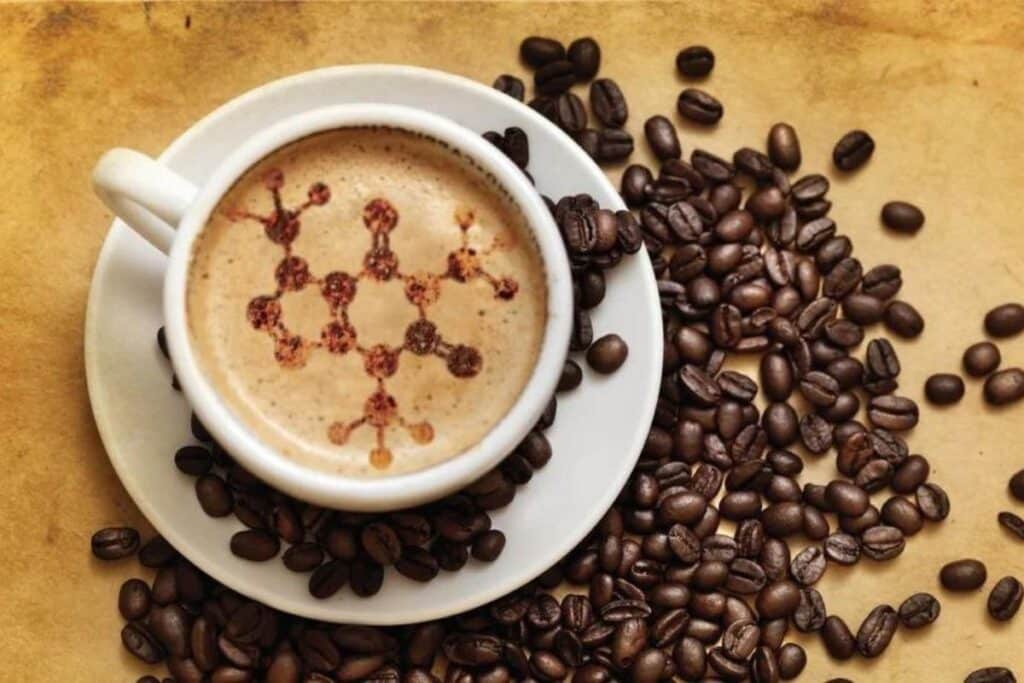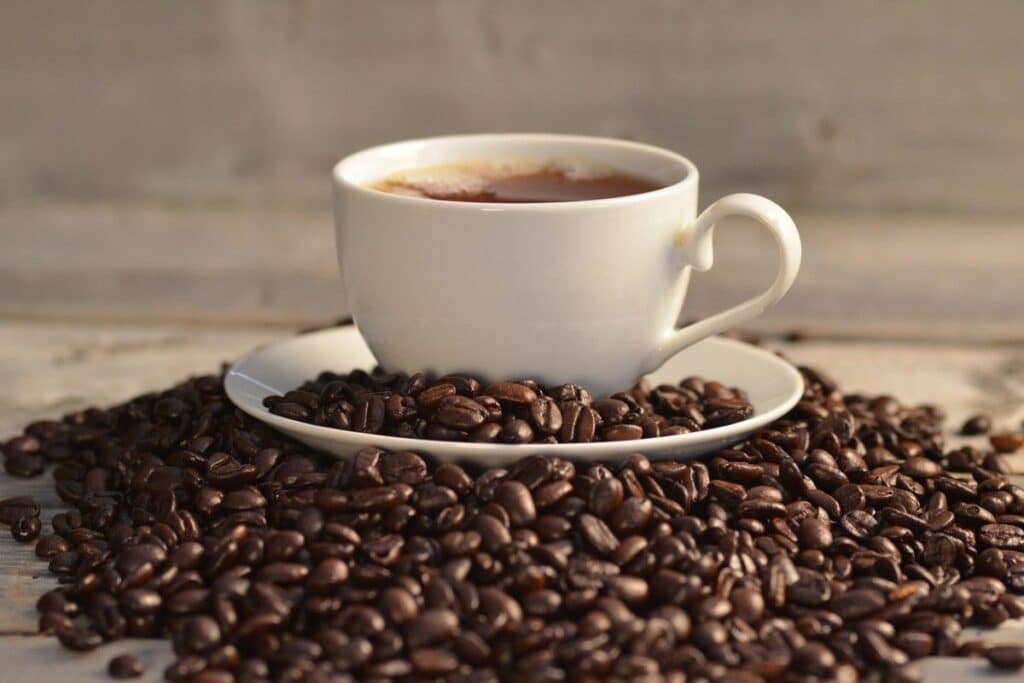Welcome to the world of coffee – an adventure of flavors and aromas that has captured the hearts of people worldwide. In this read, we’re going to take a journey into this vibrant universe, touching on the variety of tastes and aromas that have made this humble drink nothing short of an international love affair. We’ll explore everything from the effects of different bean types and processing methods to the fine craft of coffee tasting, using the SCA flavor wheel as our guide. If you’re a coffee lover looking to deepen your appreciation and broaden your understanding, then you’ve found the right place.
You see, coffee is far from being a one-note beverage. Its taste and aroma can differ immensely, influenced by numerous factors such as its origin, type, processing, roasting, and even brewing techniques. By getting to grips with these flavors and nuances, not only can you make your daily coffee experience even more delightful, but you also gain a new perspective to appreciate the intricacy of various coffee profiles. So, whether you’re aiming to be a coffee expert, a top-notch barista, or just a well-informed coffee enthusiast, this knowledge is absolutely vital.
The History of Coffee

Coffee is believed to have originated in the ancient coffee forests of Ethiopia, where it was first discovered by a goat herder named Kaldi around the 9th century. The popularity of coffee as a beverage began in the Arabian Peninsula and from there, it spread to Europe in the 17th century, and then to the Americas. The cultivation of coffee took off rapidly due to its stimulating effects and rich, diverse flavors. As the coffee trade grew, different regions around the world began to cultivate coffee. This lead to a wide variety of coffee types and tastes that we enjoy today.
Where a coffee plant grows can significantly shape its flavor, thanks to a unique mix of factors like climate, soil type, altitude, and even local farming methods. For instance, Latin American coffees are often prized for their bright acidity and fruity tones, whereas African coffees might lean more towards floral and winey profiles, and Asian coffees can be full-bodied with a hint of spice or earthiness.
The method of processing coffee cherries after they’re harvested also plays a major role in determining the flavor. There are three main processing techniques: natural (dry), washed (wet), and honey (semi-washed). The natural method usually gives coffee a fruity, wine-like flavor. The washed method often results in a crisp, bright flavor, while the honey process – a kind of middle ground – tends to create coffees with a harmonious blend of fruitiness and acidity.
The Science Behind Coffee Flavors

Explanation of What Influences Coffee Flavor
Variety of the Coffee Bean: Just like different grape varieties lead to different wines, the variety of the coffee bean significantly influences the flavor of the coffee. The two primary species of coffee beans cultivated for drinking are Arabica and Robusta, each having its distinct taste. Arabica beans, which are more delicate and complex, often have a wide range of taste notes and a softer, smoother flavor. In contrast, Robusta beans have a stronger, more bitter flavor, with grainy or rubbery notes often detected.
Climate and Soil: Terroir, a term borrowed from the wine industry, refers to how a particular region’s climate, soils, and aspect (terrain) affect the taste of the coffee. For example, coffee grown at higher altitudes often has higher acidity and a range of flavor notes due to the slower growth of the coffee cherries. The minerals in the soil can also affect the flavor profile of coffee.
Processing Methods: As mentioned earlier, the processing method significantly impacts the coffee’s flavor profile. The coffee cherries can be processed in three main ways: washed (where the fruit covering the beans is removed before they are dried), natural or dry (where the beans are dried inside the fruit), and honey (where some of the fruit is left on the bean as they are dried). Each method imparts a unique set of flavors to the final product.
Introduction to Coffee Tasting Notes
Coffee tasting notes refer to the distinct flavors and aromas that can be detected in a cup of coffee. Tasting notes can be highly diverse, with descriptions ranging from common concepts like ‘chocolatey’ or ‘fruity’, to more sophisticated and unusual terms like ‘winey’ or ‘earthy’. Understanding and identifying these notes is a skill that can be developed with practice, and adds to the enjoyment and appreciation of different coffee varieties and roasts. It’s worth noting that everyone’s palate is different, so tasting is always a deeply personal experience.
Coffee Tasting Basics

Explanation of What Coffee Tasting Is
Coffee tasting, also known as coffee cupping, is the process by which trained tasters assess and describe the quality and characteristics of coffee. Much like wine tasting, coffee tasting is both a science and an art, allowing one to identify flavors, notes, acidity, body, and other factors that define a specific coffee’s profile. This skill is fundamental in the coffee industry but is also enjoyable and enlightening for any coffee lover.
How to Properly Taste Coffee
- Preparation: Coffee should be freshly roasted, ideally within ten days. Use purified water and brew the coffee just before tasting. Make sure to cleanse your palate with water before you start.
- Smell: Begin by smelling the coffee. A large part of taste is actually smell, and many flavors are identified this way.
- Slurp: Take a spoonful of coffee and slurp it. This helps to aerate it across your palate, enabling you to taste the coffee with all your taste buds.
- Identify Flavors: Try to identify the different flavors you can taste. Is the coffee fruity, nutty, or spicy? Does it remind you of something specific, like berries, cocoa, or cinnamon?
- Body and Finish: Think about how the coffee feels in your mouth. Is it light and delicate or heavy and full-bodied? After swallowing, notice the flavors that linger. This is known as the finish.
- Note Down: Write down your observations. This can help you remember and understand the flavors better.
Introduction to the SCA Flavor Wheel
The Specialty Coffee Association (SCA) Flavor Wheel is a tool designed to help tasters identify and describe the flavors they experience when tasting coffee. The wheel features a spectrum of flavors, with the most general taste descriptors (like fruity or floral) in the center and more specific descriptors (like raspberry or rose) towards the edge. It’s a useful tool for both beginners and professionals in identifying and articulating the complex flavors of coffee.
Understanding Coffee Flavors and Tasting Notes

Specialty Coffee Association (SCA) Flavor Wheel
The SCA Flavor Wheel, created by the Specialty Coffee Association, is a visual tool that represents the various flavors and aromas that can be found in coffee. The wheel was developed with the help of sensory scientists, industry professionals, and skilled coffee tasters. It’s designed to be intuitive and approachable, with flavors grouped and color-coded into categories and subcategories, moving from general (near the center) to specific (near the edge).
Main Flavor Categories
The SCA Flavor Wheel consists of several main categories, each of which breaks down into more specific subcategories as you move outward on the wheel:
- Fruity: This category is associated with flavors that resemble fresh or dried fruits. For example, coffee may have notes of “berries,” like blackberry or raspberry, or “stone fruit,” like peach or apricot, or even “citrus,” such as lemon or grapefruit.
- Floral: This captures the aromatic essence of flowers. Some coffees may have a floral bouquet reminiscent of “rose” or “jasmine.” Ethiopian coffee, particularly Yirgacheffe, is famous for its intense floral notes.
- Nutty/Cocoa: These flavors are often found in well-roasted coffees. “Nutty” could be something like almond or hazelnut, while “cocoa” is reminiscent of chocolate, which could range from dark chocolate to milk chocolate.
- Spices: This category includes notes of spices like “cinnamon,” “nutmeg,” or “cardamom”. These are typically found in coffees from Asia, like those from Sumatra.
- Sweet: This encompasses a range of sweet flavors and is often linked to how sugar caramelizes when coffee is roasted. You might find notes of “brown sugar,” “honey,” or “caramel.”
- Sour/Fermented: These flavors can range from pleasant, such as the tangy brightness of citrus fruits or green apples, to unpleasant sourness that can be reminiscent of vinegar or spoiled milk, which may indicate a defect or over-fermentation.
- Green/Vegetative: These are flavors that remind you of green or under-ripe fruits, raw vegetables, grass, or fresh herbs. While sometimes these notes can indicate under-roasting or poor quality, in some cases, they contribute to the coffee’s unique character.
- Other: This is a catch-all category for flavors that don’t fit elsewhere. It includes notes like “smoky,” “woody,” or “earthy.” For example, coffees dry-processed in the traditional way often have a distinct earthy note.
How to Use the Wheel When Tasting Coffee
When tasting coffee, start in the center of the wheel and work your way outwards. Begin by identifying the most general flavor categories (like fruity or floral), then move outwards to pinpoint more specific flavors. For example, if you taste something fruity, try to identify if it’s more like berries or citrus. Then get even more specific – if it’s berries, is it more like raspberries or blackberries? The goal is to help you articulate the complex flavors of coffee more accurately.
How These Flavors Interact to Create Complex Taste Profiles
Each cup of coffee can contain a multitude of these flavors, and the interaction between them creates the coffee’s unique taste profile. For example, a coffee might have a dominant note of “blackberry” (fruity) with a hint of “dark chocolate” (cocoa), a “floral” aroma, and an underlying “nutty” character. The beauty of coffee tasting lies in identifying these intricate combinations.
Just as in cooking, balance is crucial. A coffee with a single overwhelming note might be less enjoyable than one with a harmonious blend of flavors. Similarly, the quality of the flavors matters: a coffee with a bright, clean citrus note might be delicious, while a coffee with an overly sour, fermented flavor might not.
Understanding these interactions helps coffee professionals in making decisions at all stages of coffee production, from growing and processing to roasting and brewing. For coffee lovers, it opens up a whole new world of enjoyment, turning each cup into an adventure of discovery.
Influence of Roasting on Coffee Flavors

How Roasting Affects Coffee Flavors
Roasting plays a crucial role in developing the flavors we associate with coffee. It is during the roasting process that green coffee beans are transformed into the fragrant, brown beans we use to brew coffee. During roasting, heat causes a series of chemical reactions in the beans, including caramelization and the Maillard reaction, which develop the beans’ flavor, acidity, body, and aroma.
Different roasting levels can drastically change the final taste of the coffee. Some flavors are emphasized or suppressed based on the degree of roast, which can range from light to dark. Lighter roasts often maintain more of the original coffee bean’s flavor, the so-called “origin character”, while darker roasts tend to have a stronger, bolder flavor that’s influenced more by the roasting process itself.
Flavor Profiles for Light, Medium, and Dark Roasts
Light Roasts: Lightly roasted coffee beans are generally lighter in color and have no oil on the surface of the beans. They have a toasted grain taste and pronounced acidity. The origin flavors of the bean are retained to a greater extent than in darker roasts, so light roast can feature a wide variety of taste notes, like fruits, florals, or spices.
Medium Roasts: Medium roasted beans are medium brown in color and also have no oil on the surface. They offer a balance between the flavors of the roast and the original bean. The coffee’s acidity decreases somewhat, and a more complex flavor profile emerges, with notes like caramel or nuts often detected.
Dark Roasts: Dark roast coffee beans are dark brown, often shiny with oil, and have a noticeable bitterness. The darker the roast, the less the flavor of the coffee is about the original bean, and the more it’s about the flavors of the roasting process. Dark roasts often have flavor notes described as “chocolate,” “roasty,” or “smoky.” The body of the coffee is usually fuller compared to lighter roasts.
Practical Tips for Developing Your Palate

How to Practice Tasting and Identifying Flavors
- Taste Regularly: The key to developing your palate is practice. Try to taste coffee regularly and from a variety of origins and roasts. You’ll start to recognize and appreciate the diversity of flavors coffee can offer.
- Use the SCA Flavor Wheel: This can help you to identify and articulate what you’re tasting. Try to go beyond general categories and pinpoint more specific flavors.
- Taste in Comparisons: It can be helpful to taste two or more coffees side by side. The differences between them can be more apparent, helping you to identify specific characteristics.
- Explore Food Flavors: The vocabulary for describing coffee flavors comes largely from the food world. Try to taste the foods listed on the flavor wheel, like various fruits, nuts, spices, etc. This can help you recognize these flavors when they appear in coffee.
- Take Notes: Keep a tasting journal to record your impressions. Over time, you’ll be able to see how your palate and ability to identify flavors have evolved.
How to Use Flavor Vocabulary When Describing Coffee
Describing flavors is subjective and can be tricky. It’s about communicating personal experiences, so there’s no right or wrong. However, using a shared vocabulary – like the terms on the SCA Flavor Wheel – can make your descriptions more understandable to others.
When describing a coffee, you might start with the most noticeable flavors, then move on to subtler ones. Also, consider the coffee’s other characteristics, like acidity, body, and finish. For example, a description might be something like: “This medium-roast Colombian coffee has a bright, citric acidity, medium body, and dominant notes of red fruit, like cherry, with subtle hints of dark chocolate in the finish.”
Remember, the goal isn’t to identify every possible flavor note but to capture the coffee’s overall character and what stands out to you. Your descriptions will naturally become more detailed and precise as you practice and your palate develops.
Conclusion
Understanding coffee flavors and tasting notes is an enriching journey into the world of coffee. It provides a deeper appreciation for the complexity of this beloved beverage and the factors that contribute to its diverse flavor profiles – from the type of coffee bean and its origin to the processing methods and roasting techniques. Having this knowledge can enhance your enjoyment of coffee and make every cup a unique sensory experience.
The world of coffee flavors is broad and fascinating. Each coffee bean carries a story of its origin, captured in its unique array of flavors and aromas. As you continue your coffee journey, remember that it’s not just about finding the perfect brew, but also about experiencing and appreciating the variety and complexity that coffee offers.
Developing your palate and vocabulary for describing coffee is a skill that grows over time, so don’t be discouraged if you can’t discern all the different tasting notes at first. Keep tasting, keep exploring, and most importantly, keep enjoying the rich and wonderful world of coffee flavors. Each cup you savor is another step on your exciting journey in the realm of coffee.
References
- Specialty Coffee Association (SCA). (2016). Coffee Taster’s Flavor Wheel. https://sca.coffee/research/coffee-tasters-flavor-wheel
- Coffee Research Institute. (n.d.). The Basics of Coffee Tasting. http://www.coffeeresearch.org/coffee/tasting.htm
- Hoffmann, J. (2014). The World Atlas of Coffee: From Beans to Brewing – Coffees Explored, Explained and Enjoyed. Octopus Publishing Group.
- Rao, S. (2014). The Coffee Roaster’s Companion. Scott Rao.
- Davids, K. (2015). Coffee: A Guide to Buying, Brewing, and Enjoying, Fifth Edition. St. Martin’s Griffin.
- Thurston, R.W., Morris, J., & Steiman, S. (2013). Coffee: A Comprehensive Guide to the Bean, the Beverage, and the Industry. Rowman & Littlefield Publishers.






